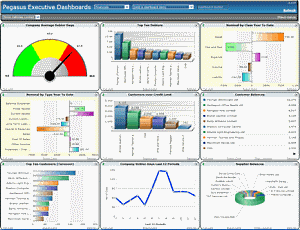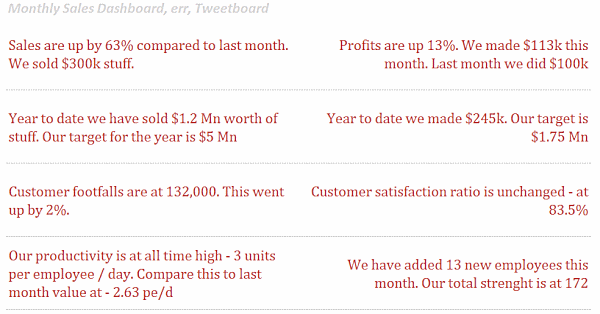 Why do we make dashboards? To me the reason would be “to provide all the necessary information at a glance so that you can make a decision (or just get a feel)”
Why do we make dashboards? To me the reason would be “to provide all the necessary information at a glance so that you can make a decision (or just get a feel)”
I think the traditional dashboards are overloaded with lots of information (and sometimes data) and often take more time to interpret. This means less time for decision making.
With that backdrop, I would like to propose a simple alternative to executive dashboards
Tweetboard
What in the name of 13 sliced pie chart is a tweetboard?
Imagine a dashboard with out charts, but with 6 to 8 sentences, each less than 140 characters, explaining the data / trends concisely. That, my dear bird, is a tweetboard.
Take a look at an example tweetboard of monthly performance and you will know what it is:

Why I think tweetboard is an alternative to dashboard?
Because with tweetboard, your focus will be on reading the sentence and figuring out what to do with your business, not on making sense of 3 bars going up and 2 going down.
How to make a tweetboard?
Simple, Download the tweetboard excel template. Now go process your data, identify the messages you want to show in the dashboard. Go type them in the tweetboard template. Take a deep breath and go tell your story to the world.
Let us discuss:
What do you think? Would you replace a dashboard with tweetboard? Do you think it can stir up a decision maker towards action.
PS: I got the idea of tweetboard while reading Juice’s article on whether dashboards should be limited to one page.
PPS: The dashboard image is from accounting web.
PPPS: This is the first post with 2 3 PSs. 😛




















